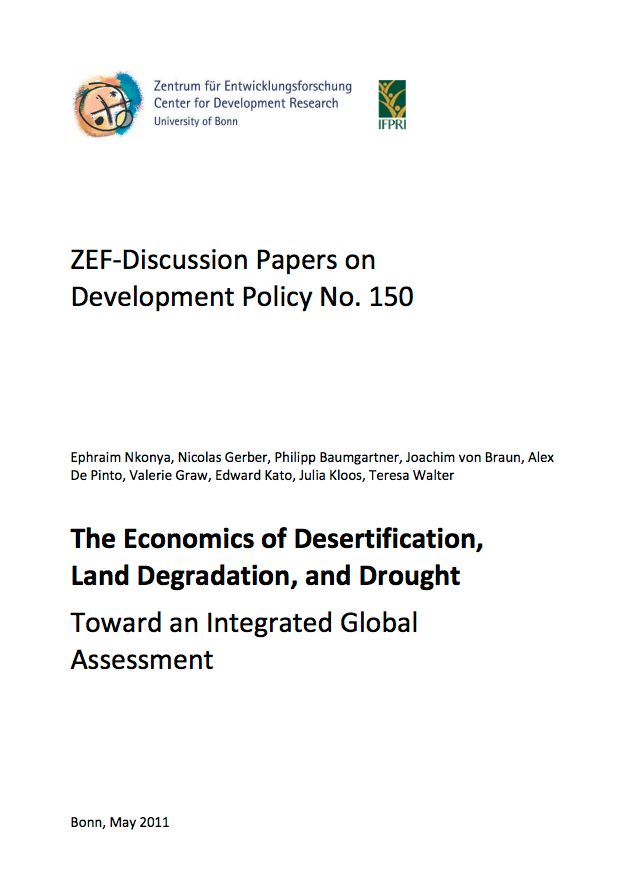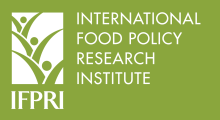Resource information
Since the publication of the Report of the Brundtland Commission (Our Common Future) in 1987, and the consequent Earth Summit on sustainable development, global attention on natural resource scarcity and degradation has been increasing, because of climate change and rising food and energy prices. This awareness, in turn, has led to growing interest in land investments by the private and public sectors. Despite this interest, however, land degradation has not been comprehensively addressed at the global level or in developing countries. A suitable economic framework that could guide investments and institutional action is lacking. This study aims to overcome this deficiency and to provide a framework for a global assessment based on a consideration of the costs of action versus inaction. Thus, a type of Stern Review (Stern 2006) for desertification, land degradation, and drought (DLDD) is aimed for on the basis of this study. The urgency of land degradation problems, the increased value of land, and new science insights all suggest that the time is ripe for a global assessment of the economics of DLDD (E-DLDD).
Land degradation is taking place in all agroecological zones. Desertification, land degradation, and drought have long affected the world. Yet, they are increasingly considered a global problem, as their extent and impacts are increasingly affecting environmental and social vulnerability.
Drought is a naturally occurring phenomenon that can accelerate desertification and land degradation. The Hadley Center for Climate Prediction and Research predicts an increase in the global area expected to experience severe drought at any point from 10 percent of the world‘s land surface in 2005 to 40 percent in the future for a given global warming of 3–4 degrees Celsius (Stern 2006). According to Webster et al. (2008), an increase in drought frequency is also expected (for example, an increase of 10 percent in southeastern and southern Asia and an increase of 20 percent in East Africa and Central America). In countries that heavily depend on rainfed agriculture or that have low riskbearing ability, drought leads to high economic loss and human suffering. Between 2000 and 2008, the average global annual economic cost of climate-related disasters—including drought, extreme temperatures, and wildfires—was US$9.39 billion,1 underscoring the need to enhance land users‘ ability to bear drought risks. Drought is linked to land degradation in several ways. However, as a recurrent fluctuation, drought requires a different type of treatment than more permanent changes, such as land degradation, in a global assessment of DLDD.
Land degradation (LD), described by the Global Land Degradation Information System (GLADIS) as the ―reduction in the capacity of the land to provide ecosystem goods and services over a period of time‖ (Nachtergaele et al., 2010, 9) is occurring worldwide and depends on the linkages between several natural and socioeconomic determinants. Humid areas seem to have a higher share of the global land degradation than initially thought (Bai et al. 2008a). According to the Global Land Degradation Assessment (GLADA), land degradation is increasing, with almost one-quarter of the global land area being degraded between 1981 and 2003. The most severely affected areas are Africa south of the Equator, Indochina, Myanmar, and Indonesia. Desertification describes land degradation in drylands, 2 which cover about 41 percent of Earth‘s land surface and which are home to more than 38 percent of the global population (Reynolds et al. 2007). In this report, which aims to set the platform for a global and comprehensive assessment of DLDD, the more inclusive term of land degradation is preferred, as it implicitly includes desertification. Measured as net primary production (NPP), without taking atmospheric fertilization into account, land degradation caused a total loss of 9.56 x 108 tons of carbon between 1981 and 2003, which amounts to $48 billion in terms of lost carbon fixation.3 Globally, DLDD affects 1.5 billion people who depend on degrading areas, and it is closely associated with poverty, with 42 percent of the very poor living in degraded areas, compared with 32 percent of the moderately poor and 15 percent of the nonpoor (Nachtergaele et al. 2010).4
Each of the concepts and data sources in recent global approaches (GLADA and GLADIS) has its relevance, but all have serious deficiencies, as they do not explicitly relate to economic productivity and human well-being (for example, NPP and Normalized Difference Vegetation Index [NDVI]).
The extent of degraded and degrading areas affects large numbers of people and leads to significant social and economic costs, thus raising the questions: In which way is it worth taking action against DLDD? Where, when (earlier rather than later?), and at what costs? To make informed decisions about how to prioritize action, it is essential to know the social and economic costs linked to the current and future status of DLDD. In addition, it is necessary to know what kind of actions can be taken against DLDD and their specific costs. In that sense, this report aims to deliver an extensive review of the current literature on the quantification and mapping of DLDD, its effects and driving forces, the economic valuation of its different costs, and the way it is embedded in the institutional and policy context. Based on this review, a general conceptual framework is proposed to compare the costs of action against DLDD versus the costs of inaction. The framework presented here and partly illustrated with case studies will prepare the groundwork for a global assessment on the costs of DLDD.
Although recognizing the differences among desertification, land degradation, and drought, this report conceptualizes the economic valuation of DLDD in terms of its association with the change in productivity and with changes in the provision of ecosystem services and the human benefits derived from them. Ecosystem services comprise provisioning (agricultural output, fuelwood, fresh water, and so on), supporting (such as soil formation, nutrient cycling), regulating (such as water and climate regulation), and cultural services.



